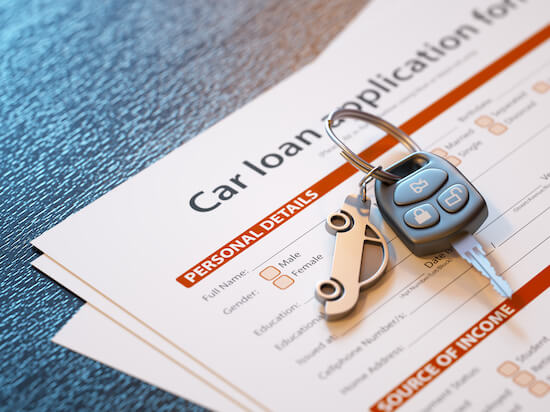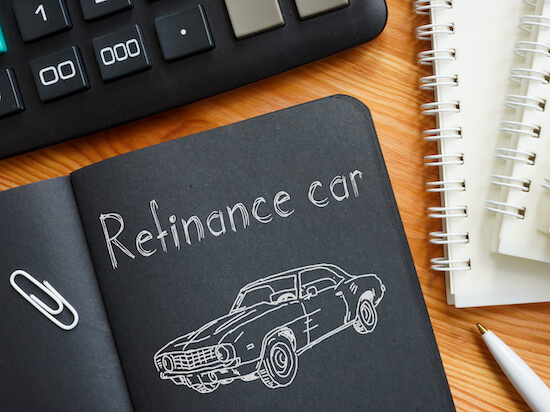Depending on your financial situation, refinancing your car loan may be a good idea. In fact, the State of Auto Refinance 2021 Key Findings report showed Americans saved an average of $989.72 a year on refinancing their car in 2020– the largest amount since 2016.
Use eTags© to Quickly Complete Your DMV Service. Renewals, Title Transfers and More, All Online!

Ideally, you’ll save money with a lower interest rate or perhaps a shorter payment term. If you’re in a better financial position than when you started the loan, removing your cosigner (and setting them free) is also an option. Read on for some tips that might help you decide if refinancing your auto loan is a good idea for you.
What does car refinancing mean?
Refinancing your auto loan means replacing your current loan with a new one. The new bank or other financial institution like Toyota Financial Services typically pays off your old loan. You’ll receive a new term length, hopefully, lower interest rates, and a new loan agreement.
RateGenius says 16% more Americans applied to refinance their auto loans in 2020 than in 2019
Step 1- Is refinancing your car loan a good idea for you?
There are a few factors that can help you determine if a car loan refinance makes sense for you.
- How much do you owe on your car? You don’t want to be upside down if you owe more than you’ve paid so far. If this is the case, lenders may not agree to pay off the remaining balance of your current loan. Some banks will rollover your current remaining balance to your new loan. You really want to crunch the numbers on this one and make sure it makes financial sense. That interest rate has to be low, low, low in order for it to work.
- How much is your car worth? You can check the value of your vehicle on websites like kelleybluebook.com. If your car truck or motorcycle is not worth quite as much as you thought, it may be best to just keep paying off your current loan and keep your vehicle in the best shape possible. Remember automobiles depreciate in value starting the moment you sign on the dotted line. And fast! It’s a good idea to keep up with what the vehicle is valued at regularly.

- A brand new car loses anywhere between 9%-11% of its value the moment you drive off the dealership lot. A year later, the car is worth 20% less and will keep depreciating 15%-25% every year until it hits the five-year mark. By then, your car is worth 60% less than when you first bought it. Of course, that’s the general rule of thumb, but these days with used car prices being so high seems like many cars are holding their value.
SEE ALSO: NEGOTIATING YOUR CAR LEASE BUYOUT
Sometimes lenders won’t refinance vehicles that are over eight years old or have over 100,000 miles on the dashboard
But you also need to ask yourself some more personal questions. For example, is your financial situation better than it was at the start of your current loan agreement? You can and you should check your credit score often to stay on top of any changes on your report like charge-offs or late payments. Experian is a great app to monitor your credit. Also, you can get access to your credit report from all three credit bureaus (Equifax, Transunion, and Experian) at www.annualcreditreport.com for free through April.
This is solid information that you need to know if you want to borrow more money for anything. If your credit isn’t any better, you may not qualify for lower interest rates when refinancing your car. Remember, after refinancing, you’ll have to do a title transfer and re-register the vehicle. Depending on where you live, this could tack on a few hundred dollars to the bill. Take Ohio for instance, you may only pay about $85 in total to transfer the title and register your car. That’s a huge difference from the potential $400 you could pay in Florida.

The CreditReview advertises car refinancing rates as low as 1.85% APR in 2022
Did you agree to any prepayment penalty or fees if you pay off your loan early?
By refinancing, your new lender will essentially buy out your old loan. A lot of times lenders charge a percentage to pay off your loan sooner than the agreed-upon date. Check your current finance agreement to see the terms of your loan.
You’ll want to take this into consideration when calculating the potential savings a refinance might bring. For instance, if the agreement you’re in right now has a 5% prepayment penalty you’ll incur, and your new interest rate is only 3% less than it is now, it’s not worth the jump. Remember, banks want to finance you, but they want to keep financing you. It’s how they make their money!
Step 2- Gather your documents, including pay stubs
No matter what, your next step should be to get your paperwork in order. The act of refinancing doesn’t really take long at all, maybe an hour once the details are sorted. You’d hate to prolong the process by not having the right documents! Pull together the following items:
- Your driver’s license (obviously, right?)
- Your current vehicle insurance
- Your current registration– you need information from here like the VIN, it could also serve as proof of address if needed
- Your social security card. Or just make sure you know the number!
- Your current loan agreement and a paystub or a bill (however you make your payments) – you’ll need to know your interest rate, your current balance on the loan, and any pre-payment information. It’s a good spot to find the customer service number as well.
- Pay stubs from your employer- makes sense, a new lender is going to make sure you can pay them back!
There might be a few specific items a lender may ask for but these are a good head start.
Using an auto refinance calculator, like one from nerdwallet.com, is a good way to check the numbers; Plugin details like the loan term, the interest rate, and the price tag to see if your lender is on their game

Step 3- Shop around, get pre-qualified if you can
It’s nice to start with your current lender and see if they can offer you a better rate in-house. That would certainly make the transition an easy one since they already have all of your information. That’s not to say, it’s not a good idea to see what else is out there. Scroll through websites for a few different banks and see what kind of interest rates someone in your financial state could qualify for (that’s why it’s good to know your credit score!).
But don’t send a bunch of applications to all sorts of lenders without thinking this thing through! Decide your front runners, and get prequalified. This will prevent the multiple hard inquiries on your credit that will inevitably drop points off your score. To be clear, pre-qualification is not a loan offer. You still need to submit a complete application to get the loan. A good pre-qualification is like dipping your toe in the water. You’re going to get a feel for the lender’s temperature on you.
Step 4- Apply, but don’t give anyone any money yet!
Now that you’ve shopped for the best rates, been prequalified with a couple of lenders, go ahead and submit those applications. The process shouldn’t take you more than an hour or so. You typically hear back right away. So, no need for nail-biting! Apply to more than one lender. See who bites. It shouldn’t cost you a dime to apply for a new car loan, so it’s a red flag if someone is asking you for money!

Pro-tip– Submit all your applications to the lenders of your choice at the same time. This eases up on the credit score drop. You may only see a few points fall off.
An origination fee is an upfront fee some lenders charge to refinance
Step 5- Review and sign
Once you’ve been approved, read through the terms and conditions. Pay close attention to what you’re agreeing to. Some approvals may be different by the slightest details except, they might not be slight to you. One lender may include a prepayment penalty, while another may charge a refinance fee upfront.
Decide which lender (that approved you) works best for you. Take note of the details: when you need to make your first payment and when your car payment is due each month. Your credit will already take a small hit from the refinance, you don’t want to add insult to injury by missing future payments. Start off on the right foot.

Shopping for a better auto loan can be a real money saver. Just make sure to do your research and pay very close attention to the process. Consider all the benefits but all the risks as well and be sure refinancing is for you.








